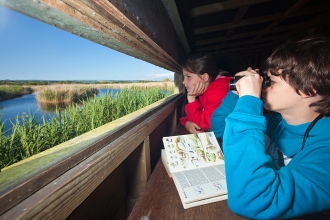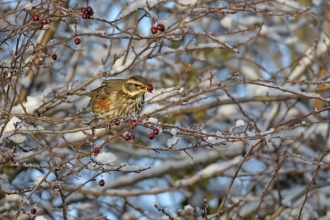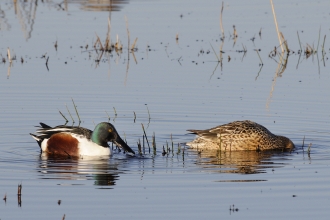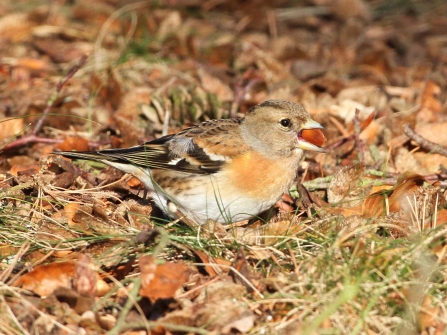
Our top 10 wildlife sightings for December

Bramblings
Bramblings can look like a chaffinch at first glance, and often form large flocks mixed with chaffinches so they can be tricky to spot.
Keep an eye out for them in beech woodland where they feed on the beech mast, as the male brambling is doing in the photo above. Try looking for bramblings in woodland reserves in the Chilterns, such as Warburg Nature Reserve and Dancersend.
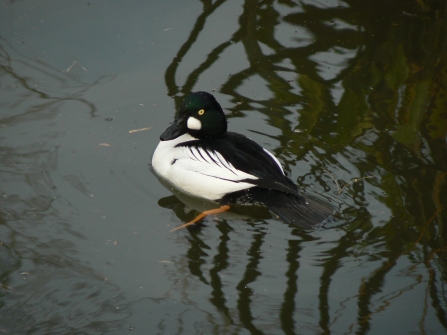
Goldeneye
These distinctive ducks are seen on large lakes and rivers. Keep an eye out for them at Hosehill Lake and Calvert Jubilee.
Goldeneyes nest in cavities in trees so their chicks have to perform a great leap of faith the day after hatching to leave the nest and reach the ground! The population increases massively in winter due to migrants from the continent.
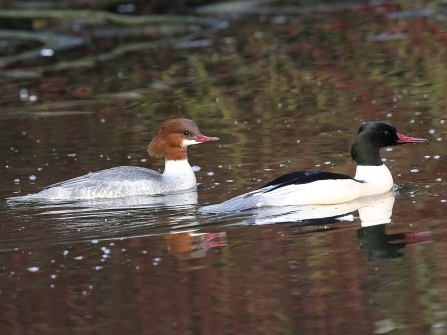
Goosanders by Margaret Holland
Goosander
Goosander catch fish with their long, serrated bills - they are often called sawbills - including trout and salmon. Young goosanders need to eat over 30kg of fish before they reach adulthood. Their scientific name, Mergus merganser, roughly translates as 'plunging goose' as they are often diving under water to hunt for fish.
Calvert Jubilee and Foxcote Reservoir are great places to look for a whole range of water birds.
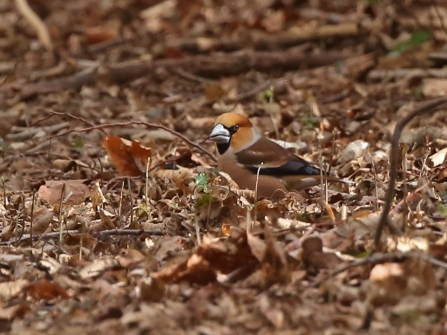
Hawfinches
Hawfinches are the UK's largest finch and are easily identified, once you find one, by their very large bill.
The number of hawfinches increases in winter as birds arrive here to find food so keep an eye out, particularly in woodlands. Follow the HawfinchesUK Twitter account for the latest news and sightings!
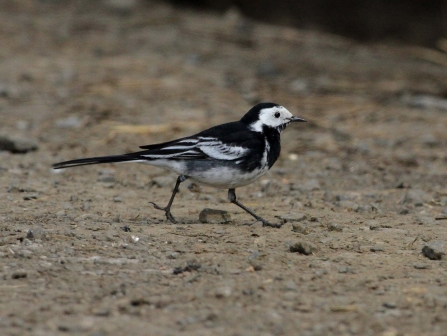
Pied wagtails
Pied wagtails are very distinctive as they walk along the ground wagging their tails while searching for food.
At dusk in winter they gather in large flocks to roost. You can often see this in urban areas as the roost in trees near offices and shops.
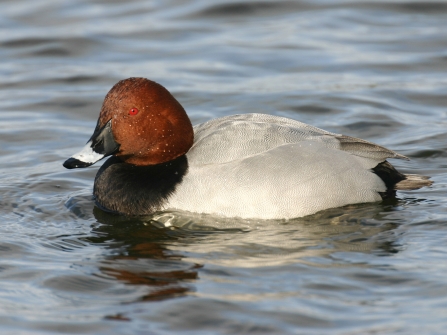
Male pochard by Tom Marshall
Pochard
A small number of pochard live in the UK all year round but you will see many more during the winter when the numbers increase as birds arrive from the continent.
Pochards are on the British Trust for Ornithology's red list as a bird of conservation concern as numbers are falling.
College Lake is one of the best sites to see a whole range of wintering birds in the Buckinghamshire.
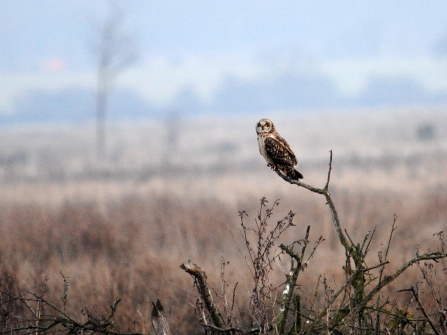
A short-eared owl perched on a branch at winter. Picture: Amy Lewis
Short-eared owl
Unlike many species of owl, you may see short-eared owls hunting during the day as well as at dusk.
In the winter our resident birds are joined by more from the continent. Look out for them hunting small mammals, and occasionally small birds, over wetlands and marshy grassland such as Chimney Meadows and the Upper Ray Meadows.
They have piercing yellow eyes and streaky feathers that camouflage them well against the grassland. Their 'ears' are actually tufts of feathers.
Video by Shutterstock
Starling murmurations
Starlings form large flocks in winter as British birds are joined by others from the continent. They roost together in huge flocks and as they gather at dusk they can form huge murmurations. Watching a murmuration of starlings wheeling and whirling across the sky is one of winter's highlights.
In our area Thatcham Reeedbeds can be a good place to spot starlings as they gather at dusk before roosting.
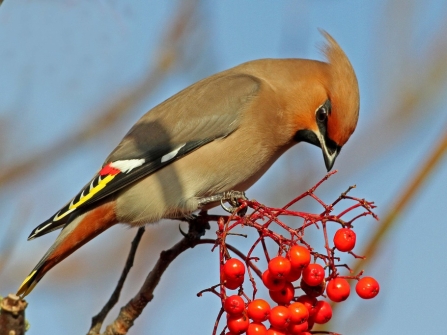
Waxwings
Waxwings love berries! Later in December, look for these birds in hedgerows as they tuck into hawthorn and rowan. You may even spot them in supermarket car parks where they eat the berries of cotoneaster and pyracantha.
Every few years there’s what’s known as an irruption, when large numbers of waxwings arrive in the UK. Irruptions happen when the continental population is too large for the amount of food available, generally because there has been a successful breeding season. The birds flock here instead in search of food and we get a real winter treat. The WaxwingsUK Twitter account has all the latest sightings. Let us know if you've seen any in our area by tweeting us.
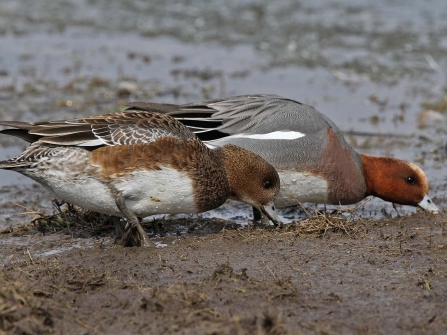
Wigeon
Look for 'whistling' wigeon on lakes, reservoirs and rivers and listen out for their distinctive whistling call. The males have a bold orange stripe along their heads while the females have a browner head and back. They eat vegetation and are often seen feeding on damp, marshy areas next to rivers and lakes.
Get started identifying different ducks and geese at College Lake, where you can ask reserve staff for help to tell them apart.
Read more blogs about birds
Stay up-to-date with our work
Sign up below to receive the latest news from BBOWT, tips about how you can help wildlife, plus information on how you can get involved.


